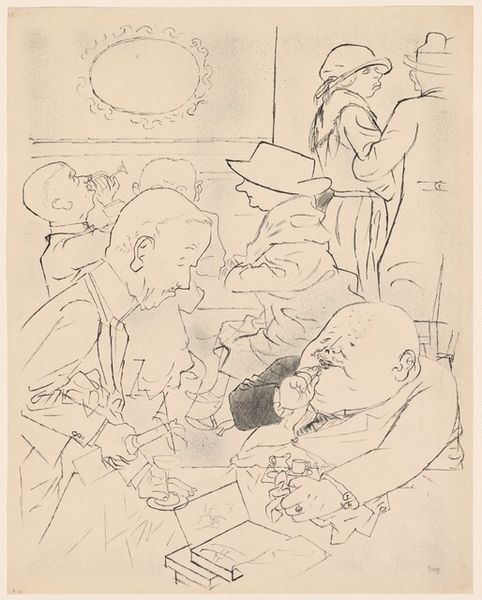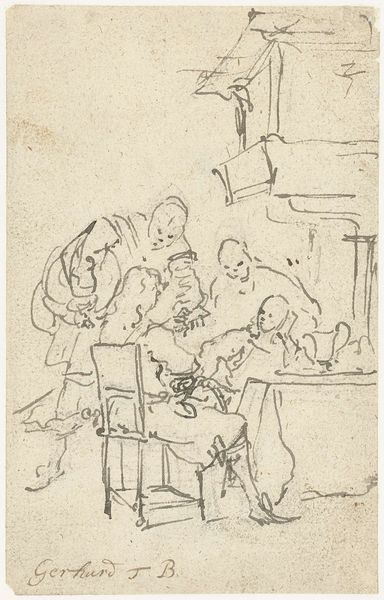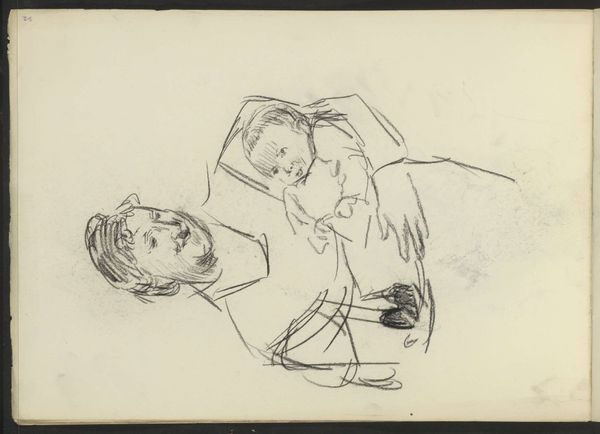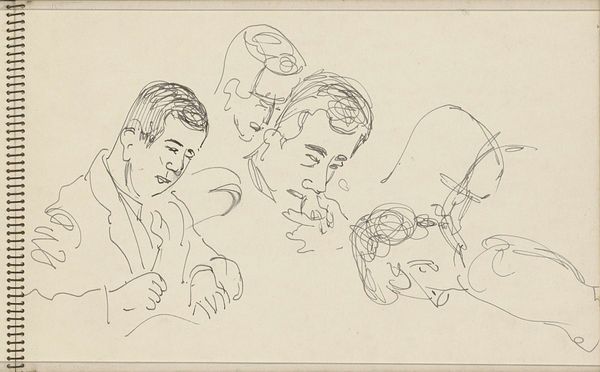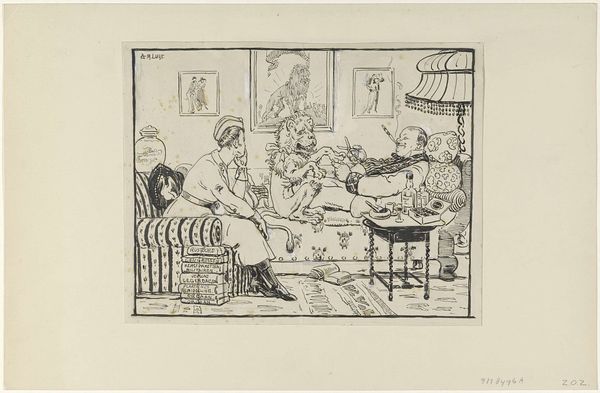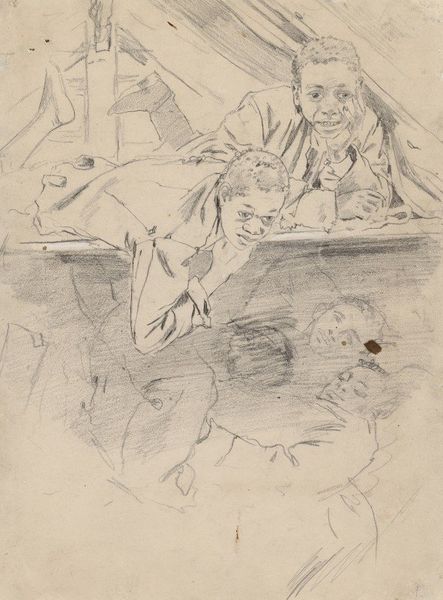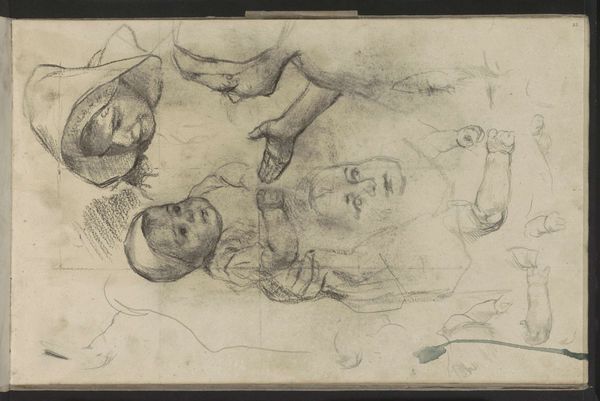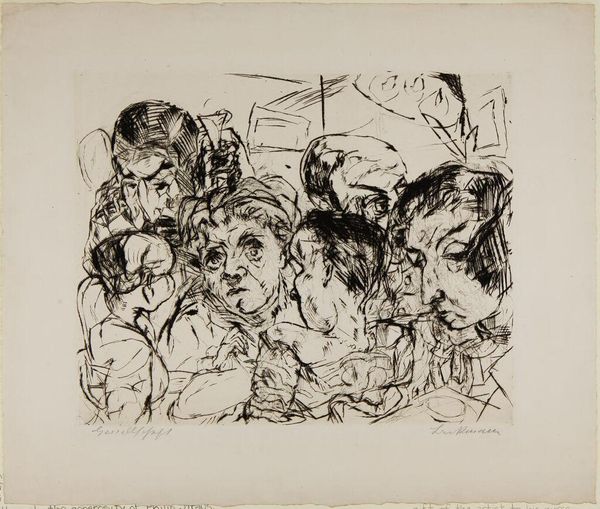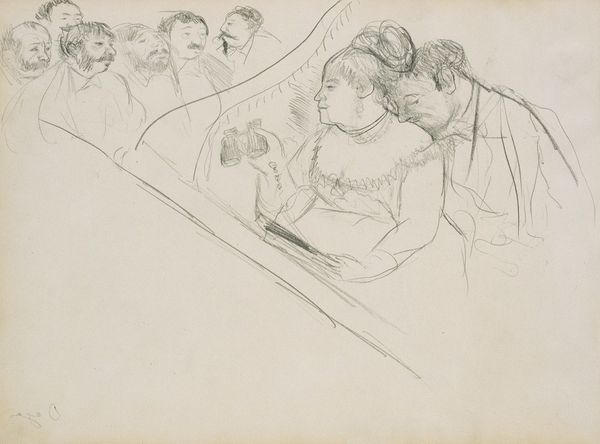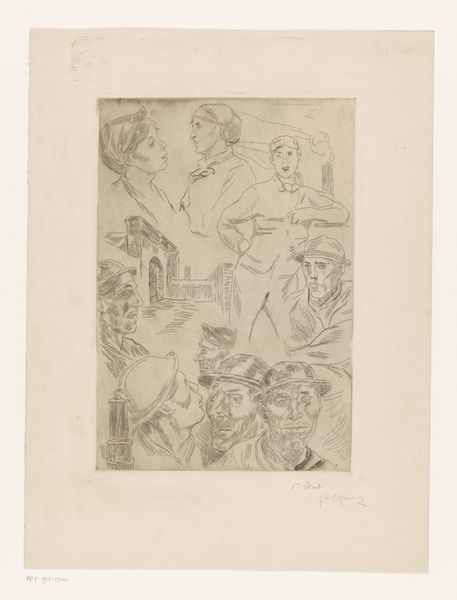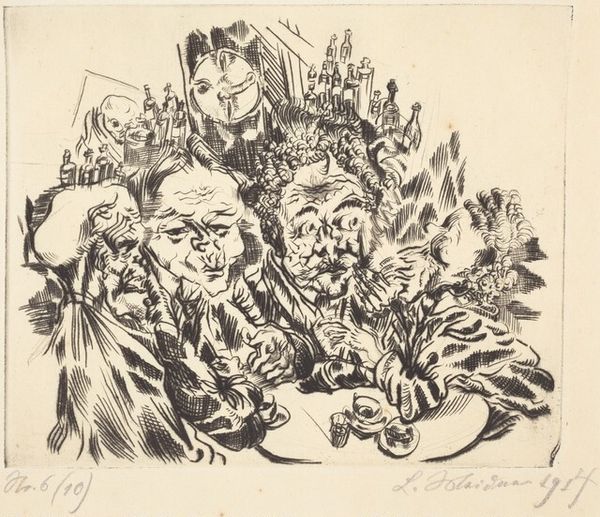
print, etching
#
portrait
# print
#
etching
#
group-portraits
#
expressionism
#
portrait drawing
#
genre-painting
#
history-painting
#
realism
Dimensions: sheet: 30.5 x 42 cm (12 x 16 9/16 in.) plate: 18.5 x 21.5 cm (7 5/16 x 8 7/16 in.)
Copyright: National Gallery of Art: CC0 1.0
Curator: What strikes me first about Kurt Beyerlein's 1928 etching, "The Family," is its air of profound unease. The stark lines and exaggerated features... they hint at something deeply unsettling. Editor: Indeed. It's fascinating how Beyerlein achieves such an emotionally charged atmosphere through a fairly restrained composition. The muted tones and the close-up perspective contribute to an overwhelming sense of discomfort. What symbolic echoes do you perceive? Curator: The central father figure, smoking a cigar with an almost indifferent expression, carries the weight of patriarchal authority—but one that's disconnected, perhaps even burdened. The mother, gaunt and anxious, presents an almost iconic image of the suffering matriarch, a recurring image reflecting societal expectations on women. Editor: And the children? The foregrounded figures, are rendered with almost grotesque detail. Their gazes seem detached, mirroring, perhaps, the dysfunction brewing in the scene. There is a compelling relationship here, one could argue, between the technique, its scratchy lines, and its conveyance of inner turmoil. The etching method here is essential, not accidental. Curator: The history painting aspect seeps through; a history of unspoken tensions and societal pressures within the domestic sphere. And even if it's an unconscious commentary, the symbolism resonates powerfully even today. It seems less about representing an individual family and more about the abstract idea of family as a potentially suffocating structure. Editor: The table serves as an isolating stage. There's minimal light and shadow—nothing theatrical or manipulative. Each family member seems trapped in their space, unable to genuinely connect. Curator: An interesting contrast: it offers an intimate snapshot but is layered with historical resonance, inviting viewers to reconsider cultural memory. The enduring power of images lies in their ability to hold and transmit coded information over generations. Editor: Agreed. The work's disquieting presence and its stark execution challenge viewers to decipher the emotional reality contained within the work. An exploration, after all, into how a medium like etching can portray the complex emotions contained within a family unit, where the visual forms create meaning and evoke questions about connection and constraint.
Comments
No comments
Be the first to comment and join the conversation on the ultimate creative platform.

